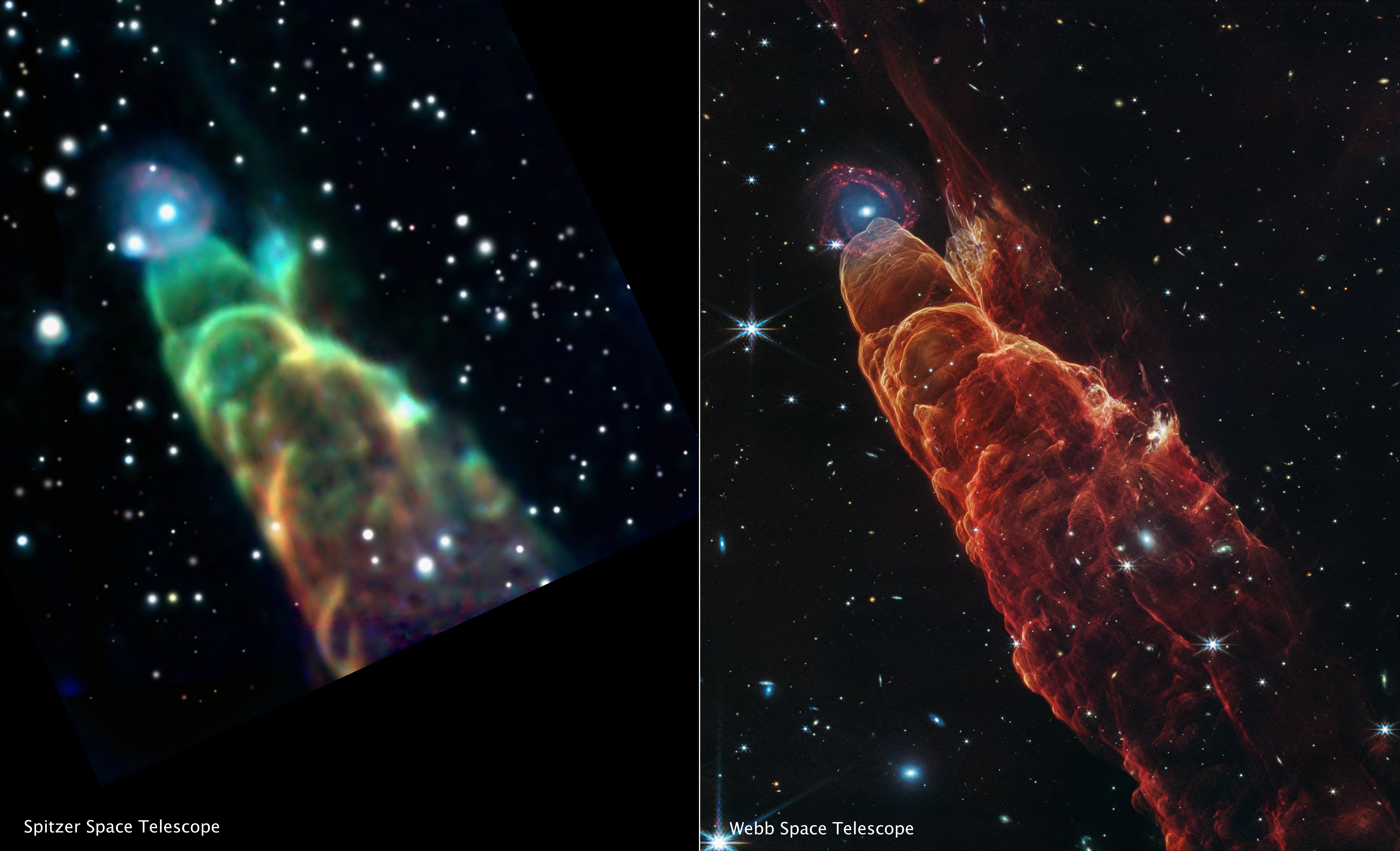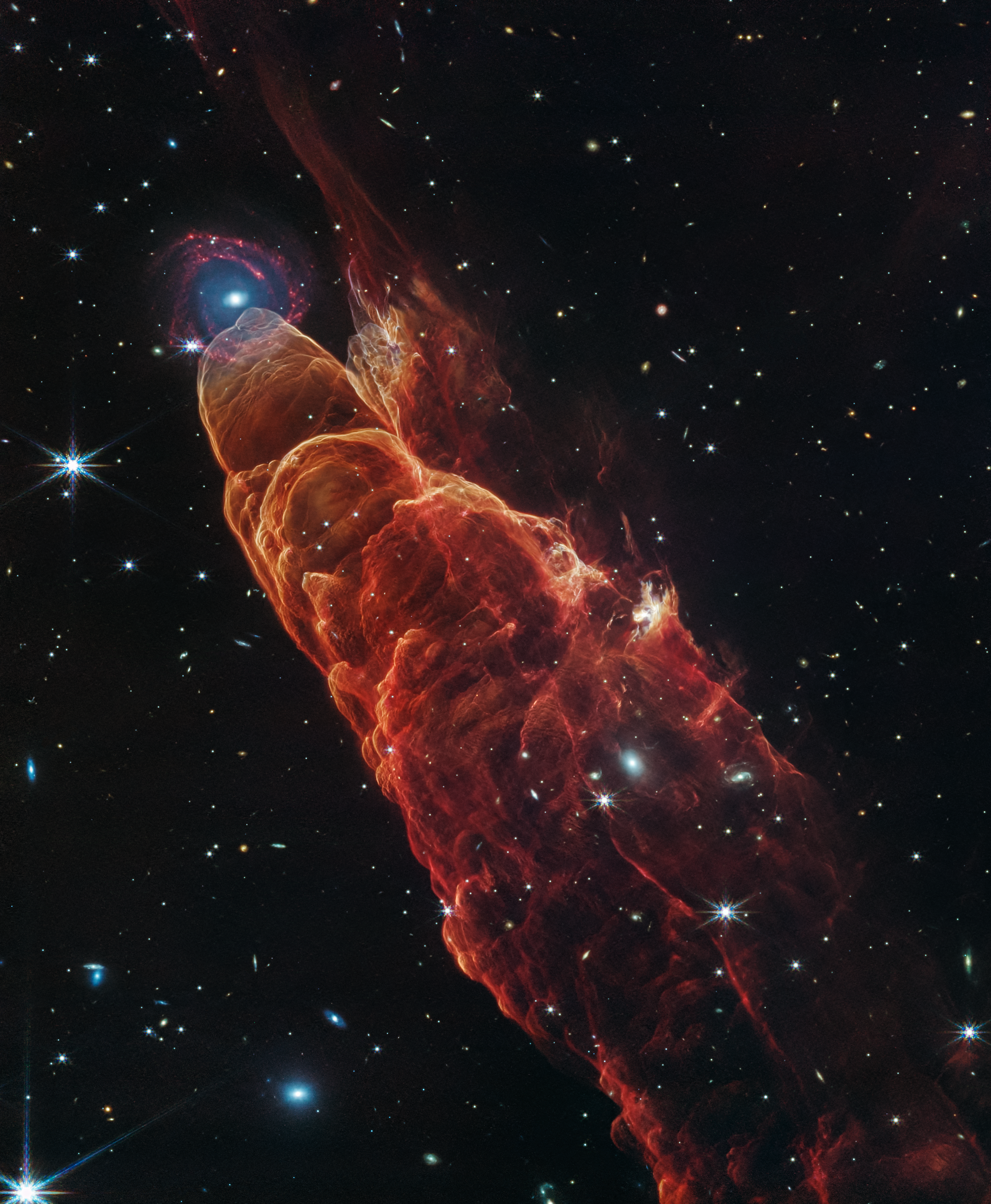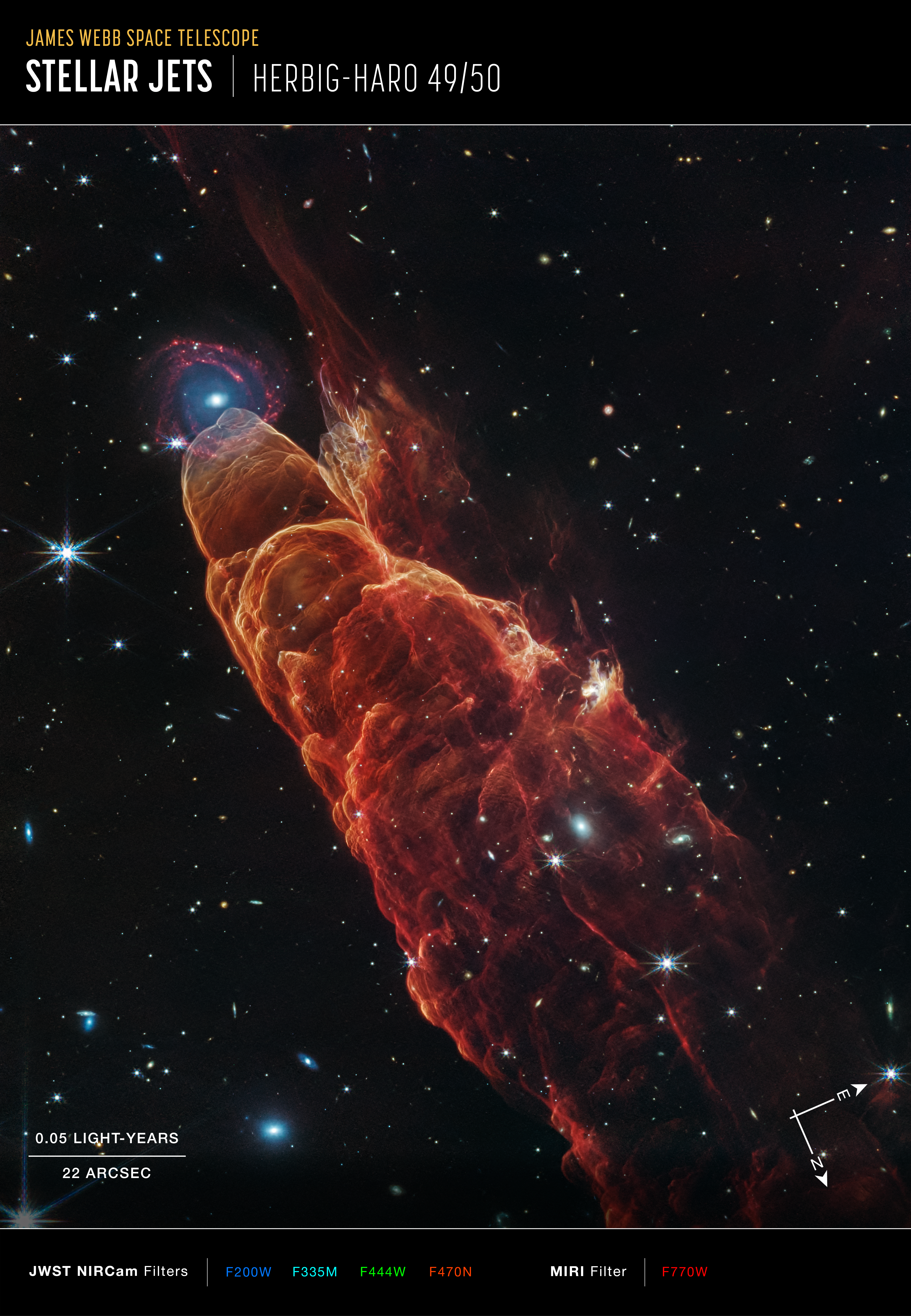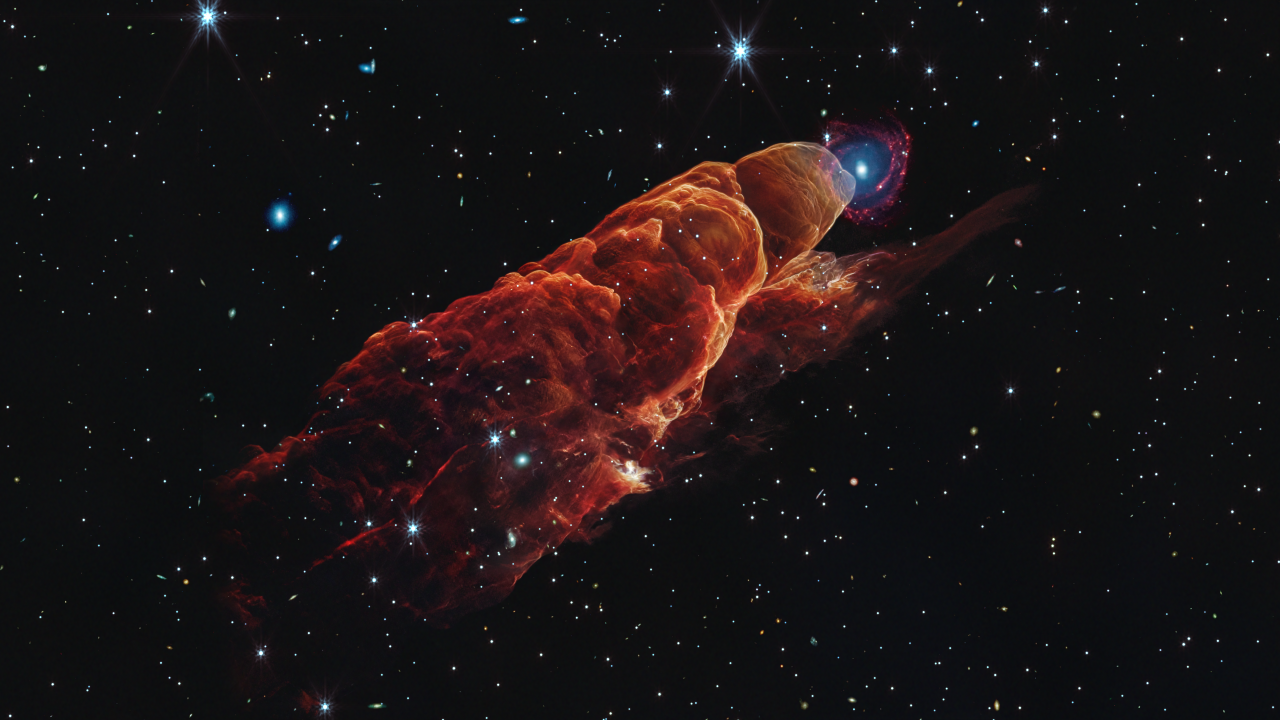1 min read
Herbig-Haro 49/50 (Spitzer and Webb Images)

This side-by-side comparison shows a Spitzer Space Telescope image of HH 49/50 (left) versus a Webb image of the same object (right) using the NIRCam (Near-infrared Camera) instrument and MIRI (Mid-infrared Instrument). The Webb image shows intricate details of the heated gas and dust as the protostellar jet slams into the material. Webb also resolves the “fuzzy” object located at the tip of the outflow into a distant spiral galaxy.
The Spitzer image shows 3.6-micron light in blue, the 4.5-micron in green, and the 8.0-micron in red. In the Webb image, blue represents light at 2.0-microns (F200W), cyan represents light at 3.3-microns, green is 4.4-microns, orange is 4.7-microns, and red is 7.7-microns.
About the Object
- R.A. PositionR.A. PositionRight ascension – analogous to longitude – is one component of an object's position.11:05:56.2
- Dec. PositionDec. PositionDeclination – analogous to latitude – is one component of an object's position.-77:33:31.7
- ConstellationConstellationOne of 88 recognized regions of the celestial sphere in which the object appears.Chamaeleon
- DistanceDistanceThe physical distance from Earth to the astronomical object. Distances within our solar system are usually measured in Astronomical Units (AU). Distances between stars are usually measured in light-years. Interstellar distances can also be measured in parsecs.625 light-years
- Object NameObject NameA name or catalog number that astronomers use to identify an astronomical object.Herbig-Haro 49/50, HH 49/50
- Object DescriptionObject DescriptionThe type of astronomical object.Stellar Jets
- Release DateMarch 24, 2025
- Science ReleaseNASA’s Webb Telescope Unmasks True Nature of the Cosmic Tornado
- CreditImage: NASA, ESA, CSA, STScI, NASA-JPL, SSC
Related Images & Videos

Herbig-Haro 49/50 (NIRCam and MIRI Image)
NASA’s James Webb Space Telescope observed Herbig-Haro 49/50, an outflow from a nearby still-forming star, in high-resolution near- and mid-infrared light. The young star is off to the lower right corner of the Webb image.Intricate features of the outflow, represented in...

Herbig-Haro 49/50 (NIRCam and MIRI Compass Image)
This image of Herbig-Haro 49/50, captured by the James Webb Space Telescope’s NIRCam (Near-Infrared Camera) and MIRI (Mid-Infrared Instrument), shows compass arrows, scale bar, and color key for reference. The north and east compass arrows show the orientation of the image on...

Herbig-Haro 49/50 Stellar Jets
This visualization examines the three-dimensional structure of Herbig-Haro 49/50 (HH 49/50) as seen in near- and mid-infrared light by the James Webb Space Telescope. HH 49/50 is an outflow produced by the jet of a nearby still-forming star in the Chamaeleon I Cloud complex, one...
Share
Details
Laura Betz
NASA’s Goddard Space Flight Center
Greenbelt, Maryland
laura.e.betz@nasa.gov
NASA, ESA, CSA, STScI, NASA-JPL, SSC






























